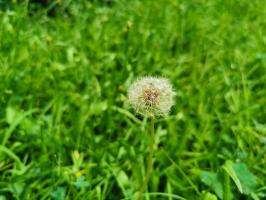How to Propagate a Rubber Tree Plant
Rubber tree plants, also known as Ficus elastica, are beautiful and easy-to-care-for indoor plants. They are popular choices among houseplant enthusiasts due to their impressive size, attractive foliage, and air-purifying abilities. But what if you want to propagate your rubber tree plant and turn one plant into many? In this guide, we’ll explore several different methods for propagating your rubber tree plant so you can enjoy multiple plants.
Method One: Propagating Via Stem Cuttings
One of the most popular ways to propagate a rubber tree plant is through stem cuttings. Here’s how to do it:
First, choose a healthy rubber tree plant with stems that are at least six inches long.
Next, use a sharp, clean pair of scissors to cut a four to six-inch piece off the plant’s stem. Be sure to make the cut just below a node, which is where new growth emerges from the stem.
Remove any leaves from the bottom half of the cutting.
Place the cutting in a jar or vase filled with water, making sure that the cut end is submerged.
Keep the cutting out of direct sunlight and change the water every few days.
After a few weeks, roots should start to develop from the cut end of the stem. Once the roots are several inches long, you can transfer the cutting to a pot filled with soil.
Method Two: Propagating Via Air Layering
Another option for propagating your rubber tree plant is through air layering. Here’s how to do it:
Choose a healthy branch on the rubber tree plant and make an incision about halfway through the stem, just below a node.
Insert a toothpick or small stick into the incision to keep it open.
Apply rooting hormone to a small amount of damp sphagnum moss, then wrap the moss around the incision in the stem.
Wrap the moss and the stem with plastic wrap to keep it moist and secure.
After several weeks, roots should begin to form in the moss. Once the roots are several inches long, you can cut the stem below the moss and transfer the rooted cutting to a pot filled with soil.
Method Three: Propagating Via Division
If your rubber tree plant has grown too large for its pot, you can propagate it through division. Here’s how to do it:
Carefully remove the entire plant from its pot and gently separate the roots into two or more sections.
Trim any damaged or excessively long roots.
Repot each section into its own pot filled with soil.
Water each new plant thoroughly and place them in bright, indirect sunlight.
Maintain proper care for each new plant, including watering when the soil feels dry, and fertilizing every four to six weeks during the growing season.
In Conclusion
As you can see, there are several different ways to propagate your rubber tree plant. Whether you choose stem cuttings, air layering, or division, with the right care and attention, you can turn one plant into many and enjoy the beauty of a rubber tree plant throughout your home.

 how many times do yo...
how many times do yo... how many planted tre...
how many planted tre... how many pine trees ...
how many pine trees ... how many pecan trees...
how many pecan trees... how many plants comp...
how many plants comp... how many plants can ...
how many plants can ... how many plants and ...
how many plants and ... how many pepper plan...
how many pepper plan...
































